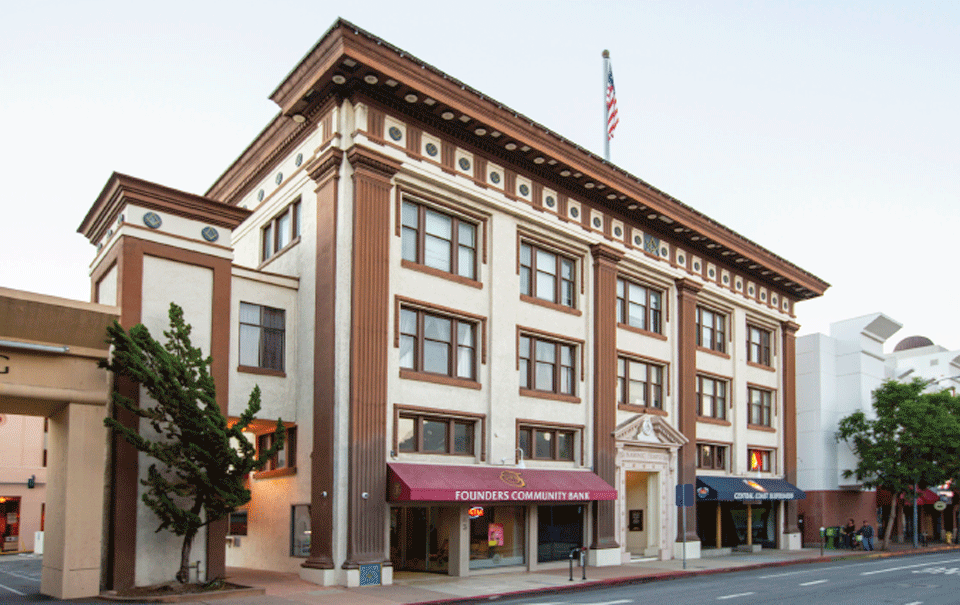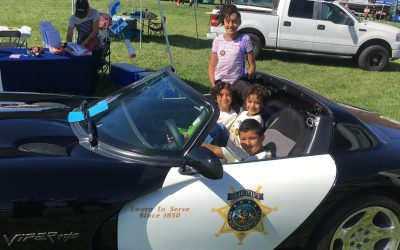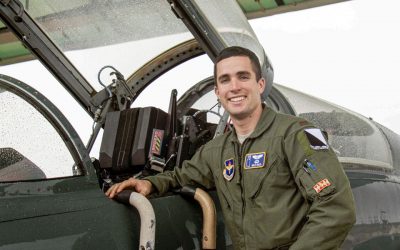Just what makes a community? There must be people, structures, various elements of governance and–unfortunately–the less virtuous of humans. Whatever the mix, a community is greater than the sum of its parts and its various factions amplify its definition. One telling aspect is how the inhabitants choose to spend their leisure time. A day devoted to employment, family and personal matters leaves little time for leisure; yet, how “unstructured” time is spent provides insights into individual as well as the collective character of the community.
From casual encounters to highly organized and ritual rich gatherings, for many of our civic ancestors–as well as for today–life needed to be more than existence. Fraternal organizations–characterized as secret societies–were many, some lasting for a time while others still enrich the civic landscape.
Certainly, one from yesteryear in San Luis Obispo serving today are the Freemasons. With its splendid building in the center of downtown, the organization has served the area for 160 years. The second of such societies founded in the community, the charitable organization has included some of the most prominent men of both the county and city.
Here’s the story.
While histories of the Golden State in the mid-19th century have an abundance of information on the quest for gold in California, the (mostly) men who ventured into the relatively unknown west also were sure to bring some of their hometowns with them. Undoubtedly, many simply envisioned striking it rich in the gold fields and then returning to their roots elsewhere. Others wanted a stake in the future other than a mine claim. Replicating a comfort from home for many was a fraternal organization such as the Masons.
Even before statehood, the Masons had already staked a modest claim in the new land. Indeed, the first Grand Master was none other than Jonathan D. Stevenson who commanded soldiers of the legendary First Regiment of New York Volunteers in 1846 to serve in the Mexican-American War. One of the recruits will prove a key member in establishing a local lodge. Echoing a familiar theme in their history, an early charity was raising funds to help cholera victims in Sacramento … not yet the state capital.
It was not long before the spread of masonry reached our county. In his seminal history of the county, Myron Angel states the origins of masonry “are wrapped in mystery but go back to the time of King Solomon.” The saga of the organization’s elaborate history is beyond the scope of this article but well-worth reviewing online at various sites. A contemporary remembrance of the local efforts is found in Peter Champion’s San Luis Obispo Freemasonry published in 2013.
There were actually two Lodges founded locally. The first dates to May 16, 1861 with the charter for the San Luis Obispo Lodge No. 148. For a variety of reasons, the Lodge was unable to sustain itself and was dissolved three years later. While having a short tenure, a new member was local pioneer, Romualdo Pacheco, whose political career led to the state’s governorship and national prominence.
A Mason himself among many accomplishments including the founding of Cal Poly, Angel provides a lengthy description of the brotherhood including a multi-page oration by one of its founding members, Walter Murray. Born in England, Murray, who came to California with the Stevenson Regiment, was a premier member of the struggling county seat.
In an extensive address extolling the order, the preeminent resident recounted the notable and noble obligations of being a Mason including helping each other in all “lawful undertakings,” sustaining the “fallen fortunes” of each other, and soothing “the afflicted.” Even in dying, Masons were to bring the “last sad offices” to the deceased and be sure to assist the survivors afterwards. It was the duty to bring the “last sad offices” to a member that will bring the ancient order back to the county seat. It was the death of Murray’s brother, 36-year-old Alexander, in 1870 that provided the impetus for a new lodge … King David’s Lodge No. 209. The elaborate response to the young man’s death by Masons throughout the county underscored the need for a local lodge. A corollary accomplishment also will lead to the establishment of a local cemetery for the final repose of non-Catholics. Within a few years, another fraternal organization, the Independent Order of Odd Fellows, opened a new cemetery known today as the San Luis Cemetery. Many men maintained membership in both the Odd Fellows and Masons.
If Walter had taken the leadership in re-establishing the order after the death of his brother, his own funeral in 1875 was “the most elaborate ceremony” in the community’s history. Angel wrote the procession to the new cemetery included 86 Masons, 315 others and 81 carriages. From the Lodge’s hall then located on Higuera Street (between Morro and Chorro) near the first City Hall, the entourage was one of the most impressive in the community’s pioneer history as it mourned the passing of the gifted judge. Murray was but one member in an impressive array of civic and community leaders. A veritable “Who’s Who” of the community included many members who also served on the earliest city governing board.
Dr. William W. Hays, Chauncey Hatch Phillips, and William Beebee served two terms each as chairmen of the six Board of Trustees’ meetings before cityhood in 1876. Other notables included Levi Ratcliffe who served as the Lodge’s first Master and later went on to become the State’s Treasurer; Horatio S. Rembaugh, who with Murray, founded The Tribune newspaper in 1869; Robert E. Jack whose residence is a city treasure today, and Louis Sinsheimer, the community’s longest serving mayor (1919-1929). District Attorney Frederick A. Dorn was Master of the Lodge and has left the intriguing–and mysterious–pyramid in the cemetery as a tribute to his wife and son.
A striking contribution to the community is the Masonic Temple on Marsh Street. After the first location on Higuera, the increase and population resulting from the arrival of the railroad in 1894 required a new building and location at the corner of Chorro and Marsh Streets. It was not until 1913 that the current structure was completed at the cost of $57,000. While the Masons trace their lineage to the stonemasons of past centuries, the building is constructed of wood.
Recently undergoing an extensive renovation, the building is an elegant reminder and memento of past times and inspiring architecture. However, it is not the structure so much that endures the test of time as the dedication to its founding and fundamental principles that continues to enrich the fabric of any community.





